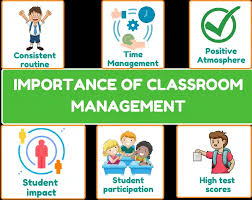Introduction:
Classroom management is the process of organizing, coordinating, and maintaining a positive learning environment in which students can thrive academically. Effective classroom management is critical for fostering students’ engagement and achieving successful teaching outcomes. This article discusses classroom management strategies that can save teachers time, energy, and help them build an effective learning space.
1. Set Clear Expectations
Having clear expectations for both academics and behaviors is essential for effective classroom management. Communicate these expectations to your students early in the school year and consistently reinforce them. Ensure that your expectations are specific, achievable, measurable, and positively stated.
2. Establish Classroom Rules
Collaborate with your students to create a set of classroom rules that promote respect, responsibility, and safety. Keep rules simple, easy to understand, and limited in number to ensure they are manageable. Refer back to the rules when enforcing expected behaviors and making connections between actions and consequences.
3. Maintain Consistency
Consistency is key for optimizing classroom management. Be consistent in enforcing rules and consequences, and maintain consistency in daily routines and schedules. This will create a sense of stability and predictability for your students.
4. Organize Your Classroom Space
A well-organized classroom helps students easily navigate the space during learning activities, minimizing disruptions. Provide designated areas for materials, group workspaces, quiet spaces for independent work, and accessible technology setups.
5. Foster Positive Student-Teacher Relationships
Building strong relationships with your students is crucial for maintaining an atmosphere of respect and encouraging cooperation. Greet students by their names upon arrival; be genuinely interested in their lives outside school; offer individual or group assistance; address student concerns fairly; show empathy to build trust.
6. Implement a Variety of Instructional Strategies
To keep your students engaged continuously, use different instructional methods that cater to their diverse learning styles. Encourage active learning through group discussions, project-based activities, and hands-on experiences. Break up longer periods of instruction with brain breaks or physically interactive activities.
7. Plan and Establish Routines
Prepare daily routines so students can transition seamlessly between activities. For instance, establish structured routines for entering the classroom, handing in assignments, asking for help, or even simple tasks such as sharpening pencils.
8. Use Positive Reinforcement
Encourage and validate desired behaviors through praise, rewards, and recognition. Celebrate student achievements—both academic and personal—to build self-esteem and motivation.
9. Implement Consequences Fairly and Firmly
Enforce consequences consistently when rules are broken to create boundaries that maintain an orderly environment. Tailor consequences to be age-appropriate and directly related to the misconduct in question.
10. Reflect and Adjust
Continuously evaluate your classroom management strategies to determine which approaches work best with your students. Adapt your strategies throughout the year as needed, while maintaining consistency in expectations and rules.
Conclusion
Successful classroom management contributes significantly to a positive learning environment that nurtures academic growth and personal development. By implementing these strategies consistently, you will establish a productive classroom where students feel respected, motivated, and focused on learning.





